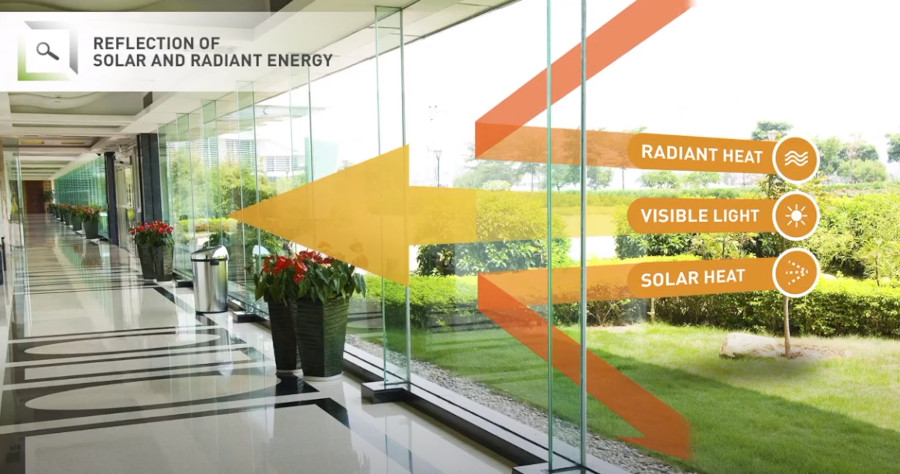Window film technology has emerged as a cost-effective and sustainable solution for both commercial and residential buildings. By applying window film to windows and glass surfaces, property owners can significantly reduce energy costs while simultaneously enhancing occupants’ living comfort. In this article, we will explore how window film works, the energy-saving benefits it offers, and how it can create a more comfortable and pleasant indoor environment.
How Window Film Works:
Window film is a thin, transparent material applied directly to glass surfaces. It is designed to control the amount of heat and light that enters the building. While there are various types of window films available, the two most common types are solar control and low-emissivity (low-E) films.
- Solar Control Films: Solar control films are designed to reduce solar heat gain by reflecting and absorbing a significant portion of incoming sunlight. These films act as a barrier against infrared and ultraviolet rays, which are major contributors to indoor heat buildup. By limiting solar heat gain, solar control films reduce the need for excessive air conditioning and help maintain a comfortable indoor temperature.
- Low-E Films: Low-emissivity (low-E) films are engineered to enhance thermal insulation. They possess a microscopically thin coating that reflects radiant heat back into the building during colder months and minimizes heat transfer through the glass. In winter, low-E films help retain indoor warmth, reducing the load on heating systems and lowering energy consumption.
Energy Savings with Window Film:
Research and studies have demonstrated the significant energy-saving potential of window films. The U.S. Department of Energy’s (DOE) National Renewable Energy Laboratory (NREL) found that window films can lead to annual energy savings ranging from 5% to 15% in commercial buildings. For residential buildings, the DOE’s ENERGY STAR program indicates that window films can reduce household energy consumption by up to 30%.
Studies have also shown that window films help to optimize building energy performance in various ways:
- Reduced Air Conditioning Usage: Window films’ ability to block solar heat gain reduces the need for air conditioning, leading to lower electricity consumption and utility bills during hot seasons.
- Improved Heating Efficiency: Low-E films contribute to improved thermal insulation during colder months, reducing heating requirements and resulting in energy savings.
- Enhanced HVAC Efficiency: By reducing temperature fluctuations, window films help HVAC systems operate more efficiently, resulting in lower maintenance costs and extended equipment lifespans.
Enhancing Living Comfort:
Apart from energy savings, window films enhance occupants’ living comfort in several ways:
- Consistent Indoor Temperature: Window films help maintain a stable indoor temperature by blocking heat from entering or escaping the building. This results in a more comfortable living environment throughout the year.
- Glare Reduction: Solar control films effectively reduce glare, making it easier to work on computers and watch television without straining the eyes.
- UV Protection: Window films block up to 99% of harmful ultraviolet (UV) rays. This protection safeguards occupants’ skin and prevents fading of interior furnishings, artwork, and flooring.
- Daylight Harvesting: Window films allow natural light to enter the building while controlling solar heat gain. This feature promotes daylight harvesting, reducing the need for artificial lighting and supporting occupant well-being.
Window film technology offers a compelling solution for reducing energy costs and enhancing living comfort in both commercial and residential buildings. With significant energy savings, improved indoor temperature control, glare reduction, UV protection, and daylight harvesting benefits, property owners can enjoy a more sustainable and comfortable living environment. By embracing window film technology, buildings can take a significant step towards energy efficiency and contribute to a greener, more eco-friendly future.
Sources:
- “Commercial Building Window Film Market Analysis.” NREL Technical Report, 2014.
- “Home Window Film Energy Performance Analysis.” NREL Technical Report, 2011.
- ENERGY STAR. “The ENERGY STAR Window, Door, and Skylight Version 7.0 Specification Development Process.”






